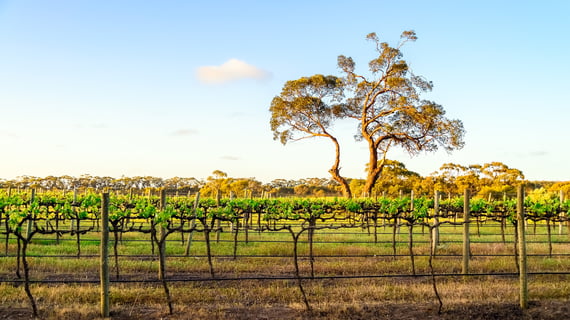
The demand for sustainable irrigation practices is on the rise, driving national resource managers (NRMs) in Australia to seek more efficient ways of managing river water for agricultural use. In response to this need, funding initiatives have been established to incentivize growers to explore and adopt cutting-edge agricultural technologies.
At Ceres, we are committed to enhancing and increasing the adoption of water management technologies. This led us to partner with Murraylands and Riverland Landscape Board to encourage the adoption of water-saving technologies across the regions they are supporting. With our powerful water recommendation tool, we were able to serve insights that helped growers use water efficiently.
How it works:
The Murraylands and Riverland Landscape Board works in partnership with regional communities to deliver a healthy and resilient landscape. The Board has developed a Regional Landscape Plan in which Sustainable Water Use is a key priority for investment. Under this plan, the Murraylands and Riverland Landscape Board partners with Ceres Imaging to promote the adoption of technology for judicious water use without compromising crop quality and yield. Different Potato, Pistachio, Almond, and Citrus growers were invited to participate in the program where they can test this technology.
Within the Board’s geographic footprint, there is a diversity of irrigated crops grown with permanent tree and vine crops being dominant along the River Murray corridor in the Riverland and annual vegetable and pasture crops grown extensively in the Murraylands and Mallee region further south.
The Murraylands and Riverland Landscape Board has a broad charter–the breadth of the business that is delivered in the sustainability area is extensive. In addition to the sustainable water use priority, the Board also has a big focus on managing and protecting regional ecological assets, both terrestrial and aquatic. All of the Murraylands and Riverland Landscape Board’s work is undertaken in partnership with the regional community in recognition of people being at the heart of landscape management.
“Water is essential to all living things and is vital for a healthy environment. The quality and availability of water often determine our quality of life. Managing the region’s water resources is necessary to ensure that everyone’s needs are met, including the environment. The Murraylands and Riverland regional economy depends on sustainable water use to support the needs of a flourishing agricultural sector, as well as, industrial and domestic requirements.” It is scientifically proven that a tree can only use water equivalent to its evapotranspiration (ETc) and any additional water applied will be wasted. This also led to wastage of soil nutrients”.
As a finite resource, systems like the River Murray are subject to varying levels of water availability from one season to the next which needs to be managed by local water users. Permanent tree and vine crops are dominant in the Riverland and underpin the regional economy, however, they have an inelastic water demand, so optimizing water efficiency provides inherent adaptability and resilience during times of reduced water availability.
The Landscape Board provides tools and resources to assist water users in managing their on-farm irrigation as efficiently as possible, including an extensive weather station network that provides close to real-time data.
As part of the current CERES project, the Murraylands and Riverland Landscape Board is utilizing the Ceres Imaging Irrigation Optimization tool. This solution prescribes exactly how much water to apply week over week per irrigation zone, minimizing waste and maximizing grower profitability. It combines custom crop coefficients derived from aerial imagery with evapotranspiration forecasts to calculate the recommended amount of water to apply. This data is tailored to specific fields, irrigation zones, local weather forecasts, and global models. The Irrigation Optimisation tool is available for all the Citrus, Nuts and grape growers of Australia.
Irrigation Sustainability Citrus Australia Irrigation Optimization Nuts Grapes
